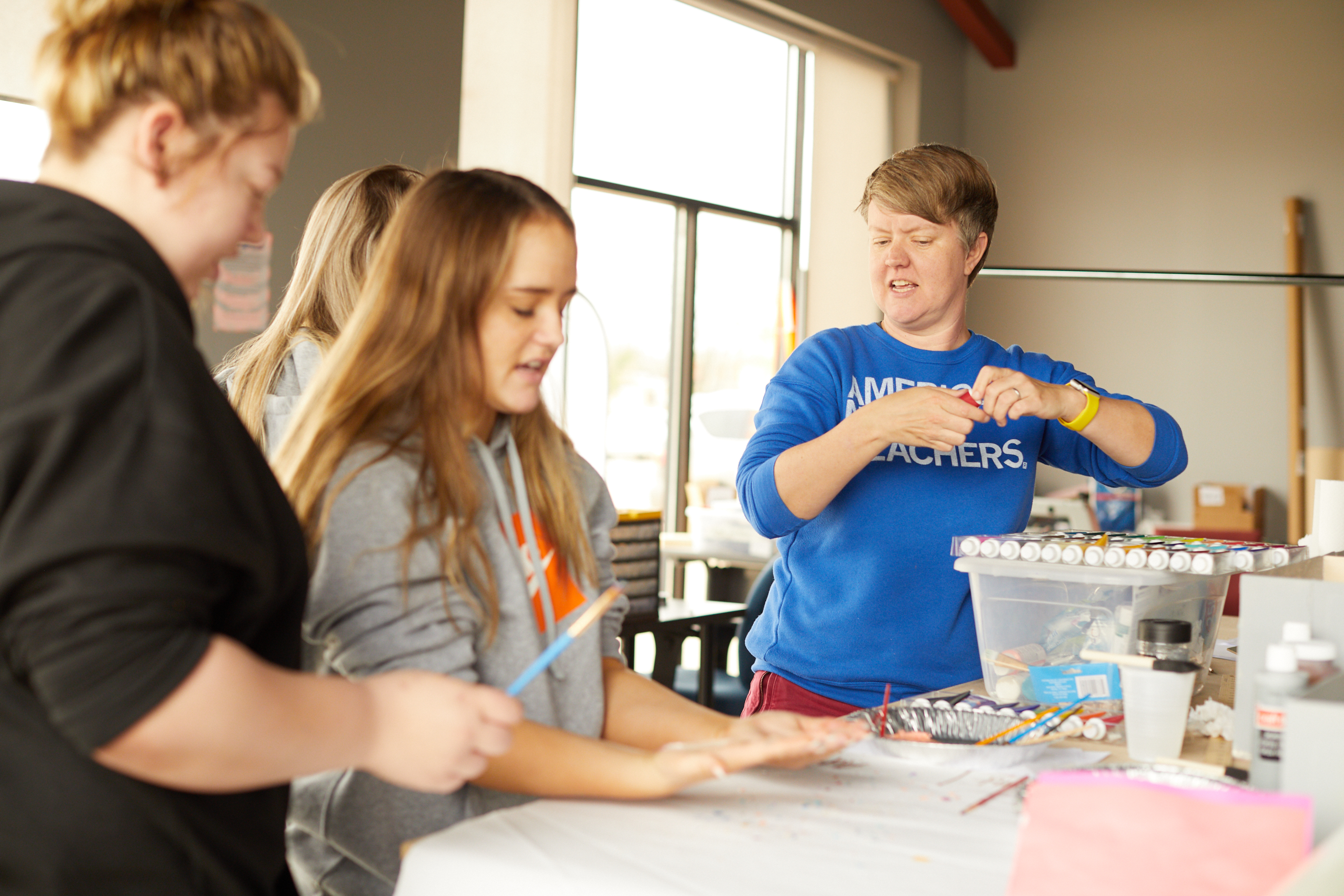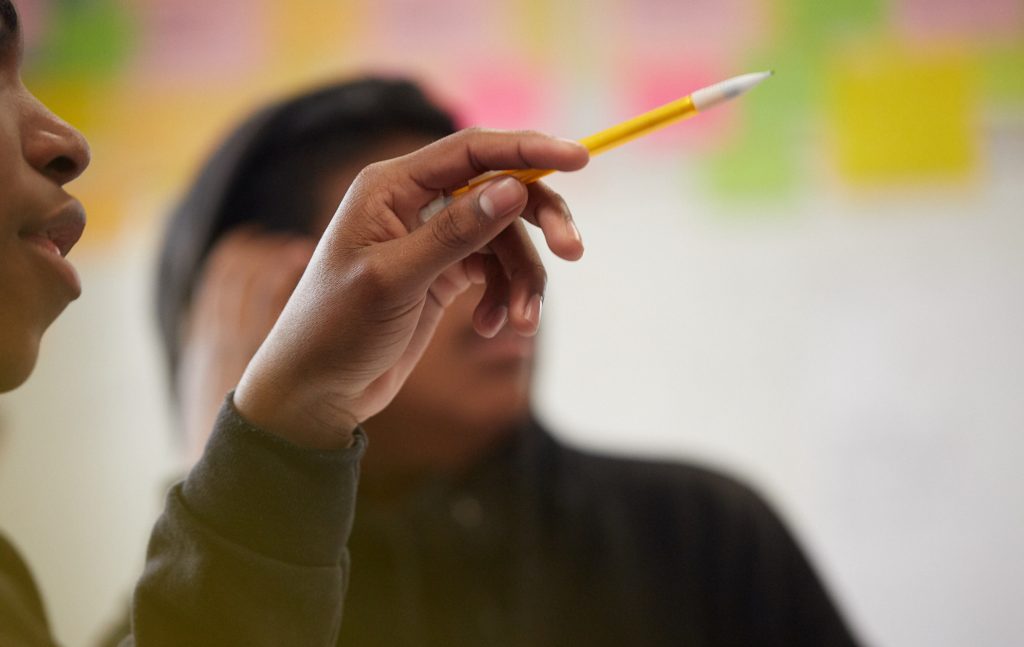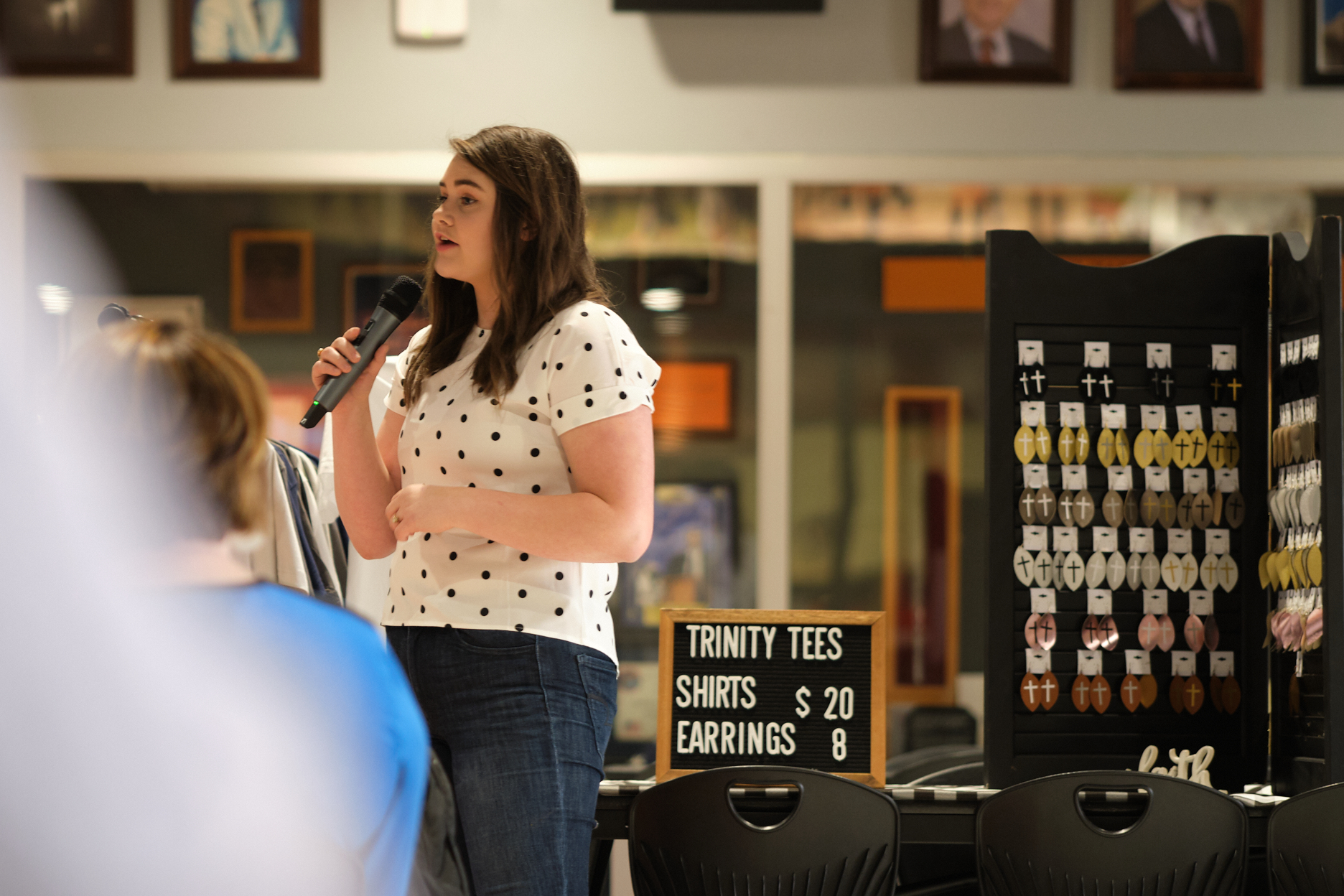The NASBE Interview: Russlynn Ali on High School Transformation
The COVID-19 pandemic transformed the world. Entire systems adapted to a new normal, shifting their infrastructure and processes to a remote world. COVID-19 changed the way we work, how we spend our free time, and—most importantly—how we care for and educate young people.

The COVID-19 pandemic transformed the world. Entire systems adapted to a new normal, shifting their infrastructure and processes to a remote world. COVID-19 changed the way we work, how we spend our free time, and—most importantly—how we care for and educate young people. School building closures brought learning into our homes and offered parents—for the first time ever—to see learning as it takes place in schools today. The pandemic brought questions of educational equity to the forefront of mainstream discourse and asked organizations working around educational transformation to double down on their work and keep momentum even after schools reopened.

We know that there are many avenues for transforming our education system—but doing so requires that we think about and center high school transformation. The American Rescue Plan and its historic funding to schools makes high school transformation a very real possibility. Earlier this year, our CEO and Co-founder Russlynn Ali spoke to the National Association of School Boards of Education [NASBE] about rethinking high school, the importance of student voice, and the future of XQ’s work. The interview was included in the May issue of The State Education Standard, which focused on reimagining schools. With permission from our friends and partners at NASBE, we’ve included the interview below:
Q: XQ is focused on transformational high schools. Where does the focus on high school come from and why is it important?
A: Everything we do is based on our belief that to change the nation, you have to change the American high school experience. High schools are the fulcrum for driving improvement and closing gaps across the education system, from the lower grades to higher ed, and eventually the workforce.
Right now, the next generation of thinkers and innovators is sitting in high school classrooms all across the country. But are we doing right by all of them? Are we doing everything possible to put them in a position to succeed?
I think we all can agree that high schools aren’t making the grade—despite the best efforts of so many educators, parents, advocates, and others. That’s for a few reasons.
One, high schools are stuck in the past. Everything else has transformed. We’ve gone from the Model T to Tesla, from typewriters to touchscreens, from switchboards to smartphones. But high schools are stagnant and operate the same way they did for our grandparents. Desks in rows. Students in seats. Seven bells and single-subject courses. The world today demands we prepare graduates who are highly competent in subjects like math, science, and history, who can thrive as collaborative learners, and also through individualized learning. Yet most schools are still relying on a century-old system that hasn’t kept up with a changing world.
Two, high schools are inequitable. To be clear, they aren’t working well enough for any student in preparing them for success in today’s world. But if you are a student of color, or from a low-income family, the odds are particularly stacked against you. Just look at the data. Achievement gaps among students of different races and family incomes not only persist but continue to widen. It’s a national shame this is still happening in the year 2021. As a country, we have a moral obligation to take a stand and change this. Every young person should have a fair chance, regardless of their background.
Three, high schools are overlooked. People have paid a lot of attention to pre-K, K-6, and college. But, come on, we all know high schools are being ignored. Isn’t it time we invest in the potential of teens instead of being cynical about them? Not only is it our responsibility to do better, but it’s also such an important stage in students’ development.

Recent research has shown that the human brain continues to develop significantly during the adolescent years. It’s also a time when people experience big changes in how they think for themselves, interact with others, and figure out their place in the world. Of course, all this assumes access to excellent teachers and to meaningful, engaged learning—learning that is rigorous and prioritizes the students who are furthest behind to ensure they get what they need from the crucial high school years so they’re ready for all the future has to offer.
We can’t keep looking away at a time when we can be most impactful. The longer we fail to act, the longer we hurt our young people, our communities, and our own collective future. We can’t reach our full potential as a country until every student can reach theirs.
Q: In your work on Super Schools, what state or local conditions do you see as improving or hindering chances for success?
RA: I’m a student of history. One thing that’s been proven time and again is that community agency is how you make progress stick. From the very beginning, XQ has believed that true and sustained change starts in the community—when everyone comes together to create a shared vision for the future, and works together to achieve it.
There isn’t a one-size-fits-all answer for every community’s school system. Each is different. That’s why we empower communities to dream big and smart, which is what Super Schools are all about. In 2014, we started exploring how to do that. Based on what we heard and what we learned, we decided to launch a competition in 2015 that invited communities to rethink and reimagine a new approach to high school.
The response was overwhelming. More than 10,000 people in 50 states formed teams to take on our Super School Challenge. What started as a small group of school winners has grown into a thriving collection of innovative public high schools across the country.
The XQ cohort currently includes 18 schools—16 schools from the original competition and two from our partnership with the State of Rhode Island. We partner with them to bring their different visions to life. In doing so, we have learned so much from them. So, back to your question, we have seen some common themes over the years about what needs to happen on the ground for these schools to succeed.
First, there needs to be authentic engagement from a diverse group of stakeholders. That’s how you fuel movements that last. A lot of efforts get stuck because parents, teachers, and school officials are all on different pages. Instead, there needs to be buy-in toward a common goal.
For example, the idea for Crosstown High School in Memphis, Tennessee, began when a local parent saw an XQ billboard. She sent an email to everyone she thought might be interested, from other parents, teachers, and students to local architects, business owners, and community leaders. All told, around 70 people—from across all parts of a city still recovering from its long history of deep segregation—came together to dream big about what they wanted for their community. And now that vision has been brought to life with a school that focuses on real-world learning in a former Sears distribution center alongside more than 40 businesses, non-profits, and civic groups.

All of our schools are the result of diverse groups of stakeholders like these coming together like this. They all align with what we at XQ call Learner Goals and Design Principles. Our Learner Goals are the educational outcomes we believe students need to thrive in today’s world—like being original thinkers and generous collaborators. And our Design Principles outline what schools need to achieve these outcomes—from having a strong mission and culture, to community partnerships, to lifting up the voice of local youth.
I encourage everyone to check out the full list on our website. With our schools, alignment around XQ Learner Goals and Design Principles is so important because change is never linear. And it’s important to always have common principles and a shared vision to ensure that our efforts stay on course. Again, I want to emphasize the importance of rigorous learning and superb, well-trained, diverse teachers, especially for those students who need great teaching and learning most, which are elements states and localities can absolutely prioritize and incentivize
Another thing that’s essential is for communities to have a proven ability to leverage and connect community assets. For example, Grand Rapids Public Museum School is located in a historic downtown building that was once the main museum building and now connects to the Grand Rapids Public Museum archives. Students use and explore more than 250,000 cultural and historic artifacts and also help museum staff collect, process, and curate new materials in a design lab, and help design and update existing exhibits. How amazing is that?
Partnerships like this are just so critical. Schools don’t operate in silos. They are impacted by everything around them: the transportation options, the housing, the strength of the local economy, the civic institutions. All of these assets need to be brought together, and work together, to deliver meaningful progress.
Lastly, there needs to be a strong appetite for change. Transforming a century-old school system can’t be done with half measures. Every single day, there needs to be urgency. There has to be ambition, to not just change one school, but to change all the high schools in a state or district within five years. Communities need to be 100% all-in.
In total, if we can come together with communities around a shared vision, leverage all the assets available, and push for progress every single day, great things can happen.
Q: What questions can state board members ask to spur action on reinventing schools?
RA: Well, before anything else, I just want to express my deepest gratitude to all the state board members across the country. It’s been such a hard year—COVID, remote learning, a moment of reckoning for racial justice, and more. I know that all of you have gone above and beyond to help your students and their parents through this unprecedented time. And I know I speak for a lot of people in saying I couldn’t be more grateful.
I really appreciate this question because it acknowledges that when it comes to transforming our schools, state board members are on the front lines of progress. You know your local schools better than anyone. You know the challenges and opportunities. You know how to mobilize local stakeholders to drive change.

That’s why all of us at XQ know how necessary it is to learn from you, and work with you, if we are indeed going to transform our nation’s high schools. And, that means every community needs to answer some fundamental questions.
First, it’s important to explore the data. How are we doing on big issues like access to challenging coursework, high school completion, college readiness, and student achievement? How are we monitoring all along the way to know that students are on the journey to college and career? How do different groups of students compare, and how can we get at all the underlying equity issues? Are high school graduation requirements aligned with the entry requirements for state colleges and universities—including flagship institutions? And look beyond just schools. Look at the community data, what jobs are available, what sectors are growing, what are the emerging needs? Over time, are the trends improving or not?
It’s also important to talk to students and their families. How are they feeling about their experiences? Do they feel the education they’re getting is truly preparing them for life after their high school degree?
And of course, get very close to teachers and principals. I mean, they have to practice a growth mindset every day when dealing with huge challenges. What’s working, and what’s getting in their way? How can they get everyone on board to serve students even better? How can community groups like youth organizations and local faith coalitions get involved?
Getting to the bottom of these kinds of questions is so critical. And they shouldn’t just be one-offs. Rather, they need to be a sustained dialogue, because there is a real chance for communities to come together to tackle them. Perhaps now more than ever because of the stimulus money coming from the American Rescue Plan.
These dollars represent an opportunity to do more than just plug holes in the old system. They are a chance to lay the foundation for something new, something better. I know that state board members across the nation are already thinking about this, and about how to design policies that fully prepare students for the future. We want to help. We’ve spent a lot of time working with students and educators to develop deep expertise on how to design and transform high schools.
XQ is working on creating new tools and guidance for state policymakers to use as they consider how to use their stimulus funding to prioritize high school transformation. Specifically, we want to help build new systems that accelerate student learning and explore transformative, evidence-based learning models that allow for flexibility in time, space, and staffing, and open rigorous academic opportunities to all students.
We’ve learned a lot from our partners on the ground. And we’re eager to work with more of you to create and implement transformational high school models. We encourage all state board members to sign up for our newsletter on our website. That’s the best way to receive our upcoming policy releases. And stay tuned for information about our upcoming engagement work, which will include outreach across the country.
Together, working in partnership and relying on data, we have a real opportunity to continue to get better and better.
Q: Imagine your ideal state team to tackle reinventing high school. Who’s at the table?
RA: As I said earlier, the most meaningful progress starts at the local level. State teams are so important. I think of XQ’s Purdue Polytechnic High School (PPHS) in Indianapolis. It was created because people noticed that very few public school students from underrepresented backgrounds were going to Purdue University. So partners from the university, and across the state, came together to create this new school to prepare first-generation college students for a STEM career. And now, because the model is so strong and demand is so great, that high school has already been replicated twice, with more PPHS high schools to come in partnership with higher ed institutions in other parts of the state. (Read more about the first graduating class at PPHS here.)

The point is, partnerships like this can make such an impact. So what do they look like? The first thing that any state effort should recognize is that transforming high schools isn’t just an education issue. Don’t get me wrong: students, parents, and educators should be central to any team. But everyone has a stake in getting this right. What we do in these schools impacts young people, families, communities, the economy, the entire country. Everyone.
So it’s important that any state team reflects these differing viewpoints. This means multiple students representing the diversity of that state’s high school experience. Parents, representatives from community-based organizations, and the business community should also be there. And of course educators, a cross-functional group of SEA staff, and representatives from local and state IHEs.
You’re going to need a pretty big table because reimagining our schools is going to take a big effort. But what’s just as important as who is at the table is how these efforts are managed. Ultimately, you’ll need one owner to drive the project. In Rhode Island, for example, the state commissioner created a new position to coordinate all the cross-functional work and oversee the transformation of all high schools.
In addition, there has to be urgency at every level. In Rhode Island, the governor, and other state officials, made it clear that this was a priority, and not just another initiative, which is helping make sure that these conversations ultimately lead to action and results.
Q: How has student voice changed the trajectory of XQ’s work?
RA: All our work is anchored in student voice. That’s been true from the very start. In fact, as we were developing the ideas that led us to create XQ, our Board Chair and Co-Founder Laurene Powell and I criss-crossed the country to listen to students and learn from them. We had dozens of deep, candid conversations with young people so we could hear directly from them what they wanted and needed from their high schools.
We did that before we even launched, and our engagement with young people has remained central to XQ ever since and in a number of ways.
One, we learn from students by listening all the time. We have a student advisory committee. Our students meet with us weekly to share their insights on their high school experience. They help inform our design ideas. In fact, the XQ Super School in Elizabethton, Tennessee, was designed by the students themselves as a project assigned by their teachers.

Two, we empower students. We’ve created an online community called Rethink Together where high school students, and others, can engage and learn—everything from how to find internships, to bringing art and activism into the classroom, to how to write a letter to their local school board. Students have been part of every school design team, both in the original competition and in our subsequent partnerships with New York City and Rhode Island. In 2020, when we invited students from across New York City to join a citywide advisory group, more than 3,600 responded: that’s how strong their interest is in being changemakers for high school transformation. It’s truly amazing to see what these young people can do.
Finally, we celebrate students, we applaud their achievements, and we are makers alongside them. Last year, in partnership with the Entertainment Industry Foundation, the LeBron James Family Foundation, and the Obama Foundation, we brought the nation together for a multi-network simulcast called Graduate Together that reached 60 million homes, along with a massive virtual yearbook, Here’s what I mean about making: more than 23,500 students submitted speeches, poems, videos, ideas, testimonials, and photos. This happened right at the start of the pandemic, when it became clear that the Class of 2020 wouldn’t have a chance to have a normal graduation ceremony. And here’s what I mean about celebrating: people like President Obama, LeBron James, and many others joined us that evening to let the Class of 2020 know we were proud of them, and to keep going, because our futures depend on them.
Q: Pilots sometimes falter during the scale-up phase. What was an unexpected challenge you did not anticipate when moving to scale in Rhode Island?
RA: Rhode Island was our first state partnership, so it’s really the first of its kind. Together, we’re engaging communities to transform every one of their 64 high schools into student-centered institutions.
To do that, we are partnering on a number of efforts with them. For example, we did something we call an Educational Opportunity Audit, which gathered data from thousands of student transcripts, surveys of students, parents and teachers, and focus groups. We looked for hidden patterns and obstacles that were blocking students from being prepared for college or a career. And we delivered our findings back to the schools, so they could see the issues and start solving them.
In May 2020, we rolled up our school-level findings into our first-ever state-level report and shared it with Rhode Island officials–including state board members–showing them evidence of serious, but addressable, inequities in college eligibility and preparedness. They took it very seriously and began taking action, which will impact generations of young people across the state.
One thing that’s been reinforced for us throughout this process is the importance of leaders who share our deep conviction that high school transformation is necessary and possible. Even in the thick of the COVID crisis, Chancellor Infante-Green remained steadfast in her determination to bring needed change to the state’s high schools. Our partnership remained strong, in part because we had built a framework that proved durable. In fact, our shared vision had already withstood a change in leadership when the previous chancellor left, and we expect it to continue to be robust under a new governor. We are currently partnering with 20 Rhode Island high school communities, so the demand for change is still there. And we will continue our work with the state’s remaining high schools over the coming year.
I should also mention that we’ve started a new initiative to tackle one of the toughest challenges in high school education: Algebra 1. We’re creating a truly engaging, project-based curriculum alongside best-in-class experts and educators that’s designed to reach every student, even those who are disaffected from math. This is essential, of course, because every young person needs to develop the math proficiency they need for success in college, without remediation. We call it XQ Math, and I hope you’ll look for it as the curriculum becomes available later this year.
So we mean it when we say that we are really trying to be a learning organization. We realize that we need to come to the table as much more than a conventional funder. Because
when you’re doing things that have never been done before, you’re always going to need to find new allies, new challenges, new insights, and new learnings. This work isn’t easy. But it’s necessary. And we look forward to partnering with more and more local leaders across the country to reinvent high schools, give all students the education they deserve, and build a better future for all of us.
Since the publication of this interview, XQ launched Choose High School Now, a comprehensive guide to ARP ESSER funding. Be sure to check out XQ’s policy recommendations, a guide to the state by state allocation of funds, student testimonials, and articles on student voice and parent engagement.









